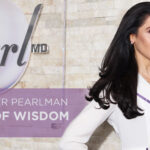
Learn how to Live Longer Better
The new science of aging is shedding light on the coveted fountain of youth. Our midlife represents both risk and opportunity. As we creep into our middle years we often begin to experience disruptive symptoms and face increased risk of chronic diseases such as heart disease, diabetes and cancer. It is at this critical time that we have the most important opportunity to take charge of our aging. Forget aging gracefully, our generation can choose to age proactively and design the second half of our lives. But to age well requires that we first understand why we are aging. As we approach midlife, we begin to face accelerated loss of vital factors; our hormones, our nutrients, our sleep and our telomeres. As a result of these losses, rapid aging ensues. Indeed, from the age of 40 to 50 years women age nearly three times as fast as any other decade. While men’s aging speeds up too, by about 60 percent, they do not face the same cliff in the aging process. A precise plan shaped to an individual’s unique biomarkers and risk profile can not only improve health but augment the arc of their aging. With the following ten actionable and accessible interventions it is possible to add decades of life full of vitality. 1.Pick your Parents well While we are 99.5% the same genetically as each other- the 0.5% of our genome that varies accounts for the vast differences between us; including our lifespan. Over 200 longevity genes have been identified. The heritability of these genes that confer a longer life may explain the genetic predisposition to living longer. However, genetics turns out to be less predictive than first thought. New research suggest that while you do want to pick your parents carefully, their genes predict less than 10% of your longevity. So what accounts for the differences? Gene environment interactions shape our risks for disease and predict our health and aging. Epigenetics is the interplay between our hardwired genome and environmental triggers that shape how our genes get expressed. Epigenetic inputs include the foods we eat, the toxins we are exposed to, our thoughts and behaviors and important internal signals like hormones and the bacteria living within us called our microbiome. 2.Optimize your Hormones Hormones are vital internal messengers and important epigenetic levers. Internal chemical signals produced in specialized glands like your ovaries, adrenals and thyroid our hormones exert effects at distant sites including altering gene expression. For women, estrogen is an important player in controlling our longevity apparatus. Women are born with biological advantages for longevity but ultimately are more susceptible to the effects of environment, stress and hormonal changes like the midlife loss of estrogen at menopause. Women who reach menopause late (after age 53 years) on average have been shown to live 30% longer than those who reach menopause early (before the age of 45 years). A whopping 30% longevity advantage is conferred by prolonged exposure to estrogen. But we have over 200 hormones in the human body each playing a vital role and working synchronously like a symphony orchestra. Optimizing hormone health throughout the lifespan but particularly through midlife and beyond is key to successful aging. The decision to take hormone therapy at menopause is an important decision each woman should consider -but only under the care of a specialized medical expert. Hormone therapy offers many health benefits but also may confer risk when used in the wrong form, dose or in the wrong patient. Only trust a qualified expert to address this vital health factor. 3.Eat for Longevity Nutritional inputs are one of the most important external epigenetic inputs shaping our health and aging. Experts suggest that dietary factors may predict as much as 30% of our aging. An expansive study of the longest living population in the world off the coast of Japan, the Okinawan islanders reveals that key to their success is the unique plant based nutrient dense diet void of processed food, low in meat, low in calories and high in fish and minerals. This diet differs from Japanese mainlanders and promotes a strong longevity advantage. It is not just about what you eat, but rather about when you do not. Fasting is perhaps the most powerful lifestyle based longevity intervention. Caloric restrictions in mice, rats, chimpanzees and other mammals has been shown to provide as much as a 35% longevity advantage. Intermittent fasting, timed eating and the ketogenic diet are caloric restriction mimetics that may turn on the longevity apparatus. Atophagy is the process of programmed cell death in which old dysfunctional cells are removed. Atophagy is akin to a rust removal system to preserve healthy vibrant tissue. This process is activated by caloric restriction and mediated by a group of proteins called sirtuins. Several nutrients have been show to also increase sirtuin activity, and augment cellular energy by increasing ATP. These include resveratrol (from red wine) and NAD, a B vitamin that can be taken in the form of Nicotinamide Mononucleotide) 4.Maintain Metabolic Fitness Metabolic fitness can be best measured in three ways: body weight, body composition and insulin sensitivity. Midlife weight gain, belly fat and glucose intolerance or pre-diabetes increase the risk of the chronic diseases of aging like cancer, heart disease, diabetes and dementia. For women, a 30lb weight gain through the menopause transition can increase breast cancer risk by 50% and shorten life expectancy. Maintaining lean body mass and warding off weight gain is key to healthy aging. 5.Move your Body outdoors Physical fitness is vital to living longer better. Moderate intensity exercise (a brisk walk being best studied) has countless direct and indirect health and aging benefits. Time in nature or forest bathing as the Japanese refer to it, can enhance the advantage with the added benefit of natural light on our circadian rhythm. We breathe better outdoors and benefit from additional stress relieving, mood and cognitive enhancing effects of time in nature. 6.Stay Strong A strong frame is required for a healthy brain. Regular weight bearing exercise to maintain bone and muscle mass is key to preserve function, performance and quality of life especially as we age. Frailty is a strong predictor of Alzheimer’s disease. So remember to add some heavy lifting to your routine as strong is the new skinny. 7.Meditate and Manage Stress Chronic stress is the common denominator of our aging. Stress accelerates aging by shrinking our telomeres; the biologic limit to longevity that exists as non-coding DNA capping our chromosomes. Telomere loss is seen in women who were caregiving to chronically ill children was reversable with stress management interventions like mindfulness, meditation and deep breathing. These practices help to improve well-being for better quality and quantity of life. 8.Sleep Well Our sleep wake cycle or circadian rhythm is set by our internal clock and the hormone melatonin. This hormone is persistent throughout evolution (even amoeba have it) to connect us to our outside world. It is turned on by darkness and shut off by light. Melatonin is a longevity booster, supports a healthy immune system and longer telomeres. Good sleep and healthy melatonin help pave the way to a longer life. 9.Stay Connected Having close confidents and a strong social network is highly associated with a better quality of life. It is after all not only about years of life but life in those years. Women are considered better listeners than men and so girl friends may be the key to a long life. But so too is our partner. Sex in our later years is vital to a long happy life. Women who are sexually active after age 70 score their quality of life much higher than those who are not. 10.Wear your Anti-oxidants As you have heard an ounce of prevention is worth a pound of cure. Yes we have tools, technology treatments like Botox and fillers to reverse aging from the face and erase fine lines, wrinkles and sun spots from the skin. However, sun damage can be irreversible. A broad spectrum sun screen, sun avoidance with hats and glasses is a great start to not only feeling great in our later chapters of life but also looking great. Beyond sunscreen the regular use of bioactive antioxidant based skin care such as vitamin A or retinols and vitamin B derivatives (including NMN) can help mitigate signs of aging like fine lines, pigment and furrows. Ageless beauty is within reach. These expert science based tips stem are actionable and accessible. When implemented, a longevity diet and lifestyle may augment your lifespan by 20 to 30 years. This longevity advantage available based on our current knowledge and tools may in fact be the bridging lifeline of additional “healthspan” to allow us to soon benefit from future scientific advancements driven by AI, machine learning and robotics that promise exponential gains in longevity. Living past the age of 200 years may soon be the norm, so we have to stay healthy and youthful enough to enjoy these scientific gains!Sincerely,
Dr. Jennifer Pearlman


